
A step-by-step tutorial showing how to paint interior doors to make a statement in any room, plus the best door paint to make them durable.
If you’ve hung around this blog for a while, it’s no secret that I love painting doors! It’s the easiest way to make a statement in a room yet, so often, it’s a missed opportunity. (I guess last week’s bunk room makeover with its Carolina Sky doors made me think of it.)
Maybe it’s a little intimidating. Maybe it’s confusing to do. My inbox gets at least one question about it per day. But I promise you, making your doors a part of a room’s design is so worth the hour or two it takes to paint.
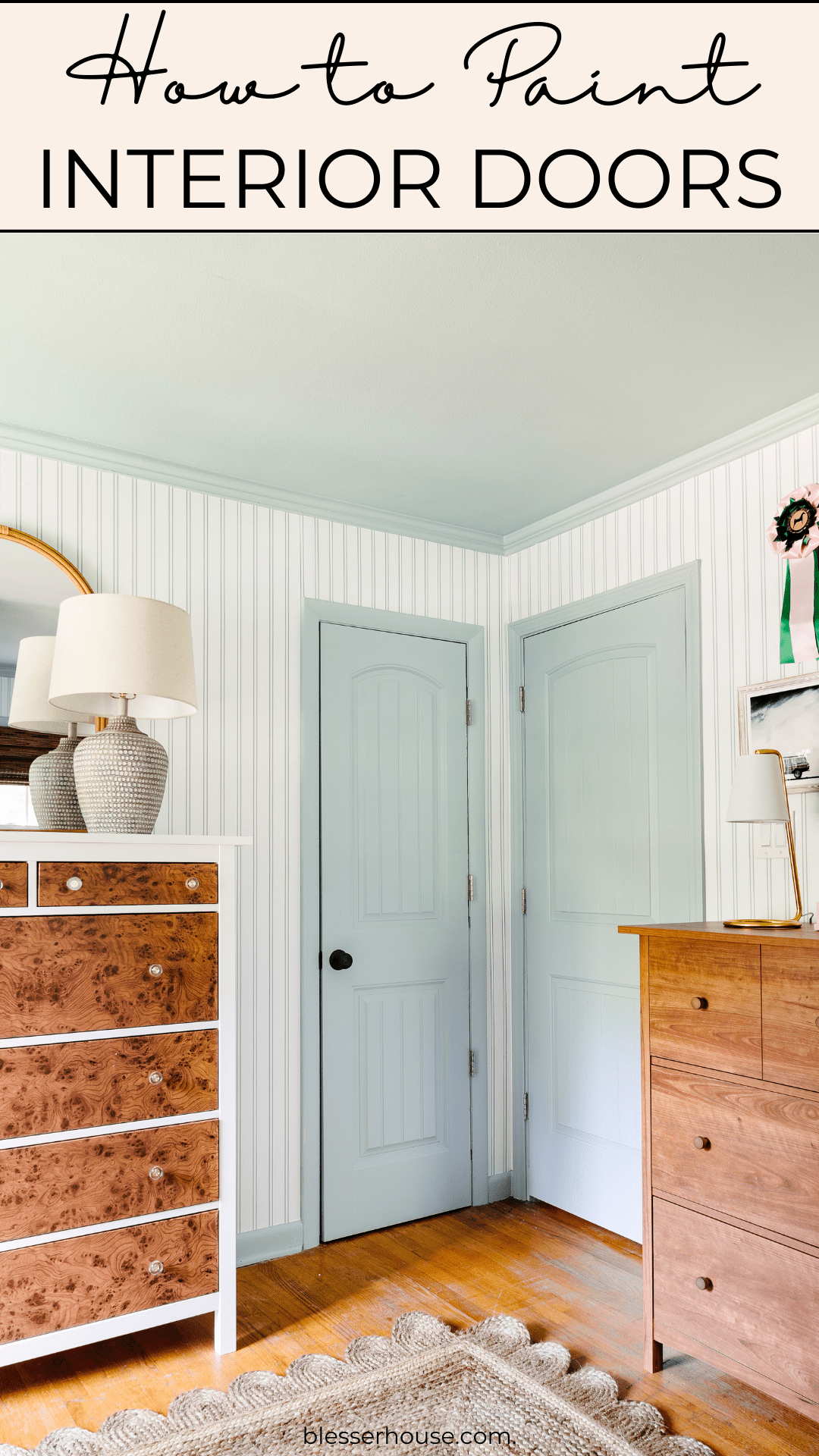
Once I brushed on that very first coat of deep charcoal on the first door in our house, there was no going back.
Robert and I made it our mission to have every single door painted with Benjamin Moore Wrought Iron ever since we moved in. It was a long game painting job for sure. Every room looks SO much more high-end because of this one little trick… for just the cost of paint!


What Sheen to Paint Interior Doors
Before diving in, you should know what kind of look you’re going for first. Paint sheen is the measure of light reflected on a painted surface.
The higher the sheen, the easier the painted surface will be to clean, and it will be more resistant to scratches or scuffs, but it also shows more imperfections. Lower sheen paints hide imperfections and are more difficult to keep clean, but they are less distracting.
Semi-gloss is the most recommended paint sheen for doors and trim, but design rules are always meant to be broken.
If you love the luxe look of high gloss, go for it. If you want a more modern approach with a velvety matte finish, go with satin or eggshell. Just be aware of the implications.

The Best Door Paint
Just like with kitchen cabinets and trim, my absolute favorite paint to use on doors is Benjamin Moore Advance because it cures to a hard, furniture-quality finish that can stand up to heavy traffic.
It’s durable like an oil based paint but with the easy clean-up of a water based paint. And it can stand up to repeated scrubbing. This paint is self-leveling too, so brush marks virtually disappear as it dries.
On some of our interior doors, I only went with a regular latex paint instead of Benjamin Moore Advance, and the finish has not stood up to our home’s traffic nearly as well. I promise you, paying a little extra for a waterborne alkyd paint is worth it.
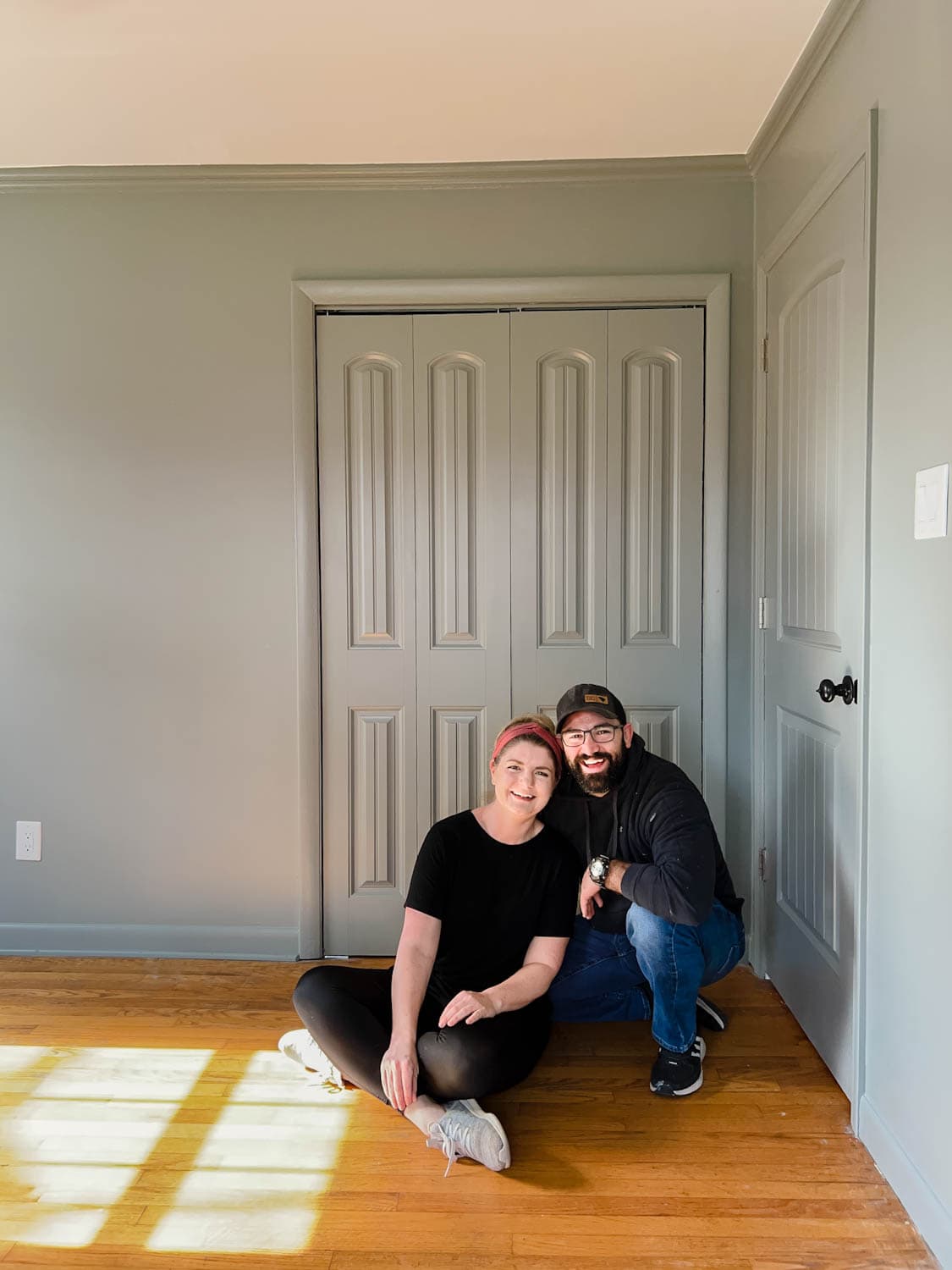
Painting these doors Sherwin Williams Evergreen Fog to match the walls made this cottage style teen bedroom feel so much bigger.
If you really want to add some drama and make your rooms feel larger, paint doors the same color as your walls and trim.
How to Paint Interior Doors Without Removing Them From Hinges
Supplies
- Liquid Deglosser
- Clean rag or tack cloth
- Drop cloth
- Rubbing alcohol
- Cotton ball
- 150 grit sandpaper
- Wood filler
- Putty knife
- Latex primer (for unfinished doors or doors previously painted with water based paint) or oil based primer (for doors previously painted with oil based paint)
- Stir sticks
- Painter’s tape
- Aluminum foil
- Paint brush (I LOVE the shape of this one for painting doors and furniture)
- Benjamin Moore Advance Paint in semi-gloss
- Mask and Peel and utility knife (if you’re painting French doors)
Steps
You don’t have to remove the door from the hinges at all for this method.
How to Paint French Doors or Windows
If you’re painting French doors or a door with a glass inset, first, use masking liquid before you start instead of struggling with painter’s tape. (If you’re not painting doors with glass, skip down to Step 4.)

Step 1 – Apply Masking Liquid
Apply a thick layer to all of the glass window panes.
It looks like glue at first and will start out looking white. After a few hours, it dries to look like a clear film. Then, follow the rest of the door painting steps below.
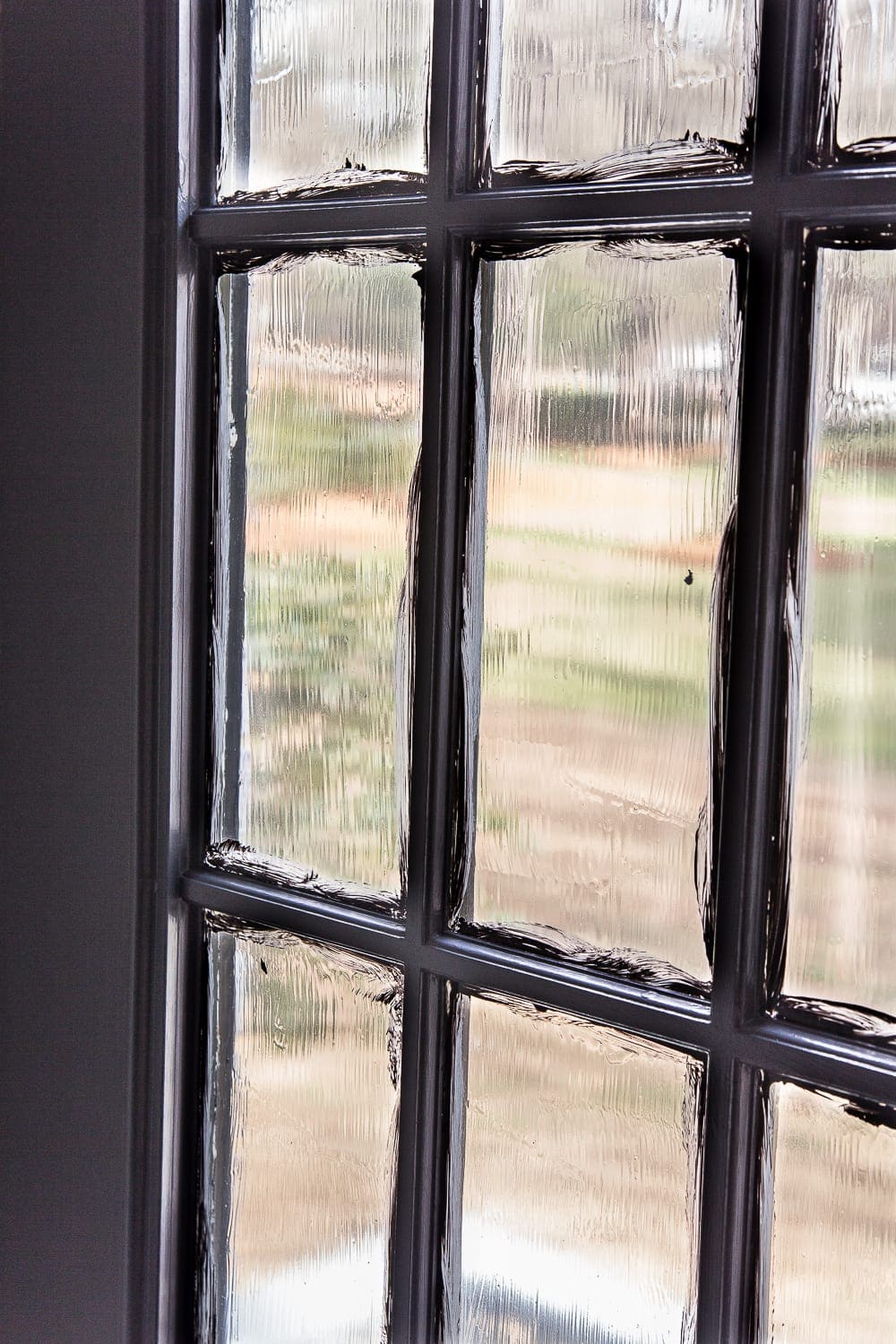
Step 2 – Score Edges
After painting your French doors, when it’s time to peel off the glass, just score the edges of the window panes with a utility knife blade.

Step 3 – After Painting, Peel Away Film
Peel back a corner of the film on the pane and remove it as it comes off in one sheet, leaving crisp, clean, freshly painted French door grids.
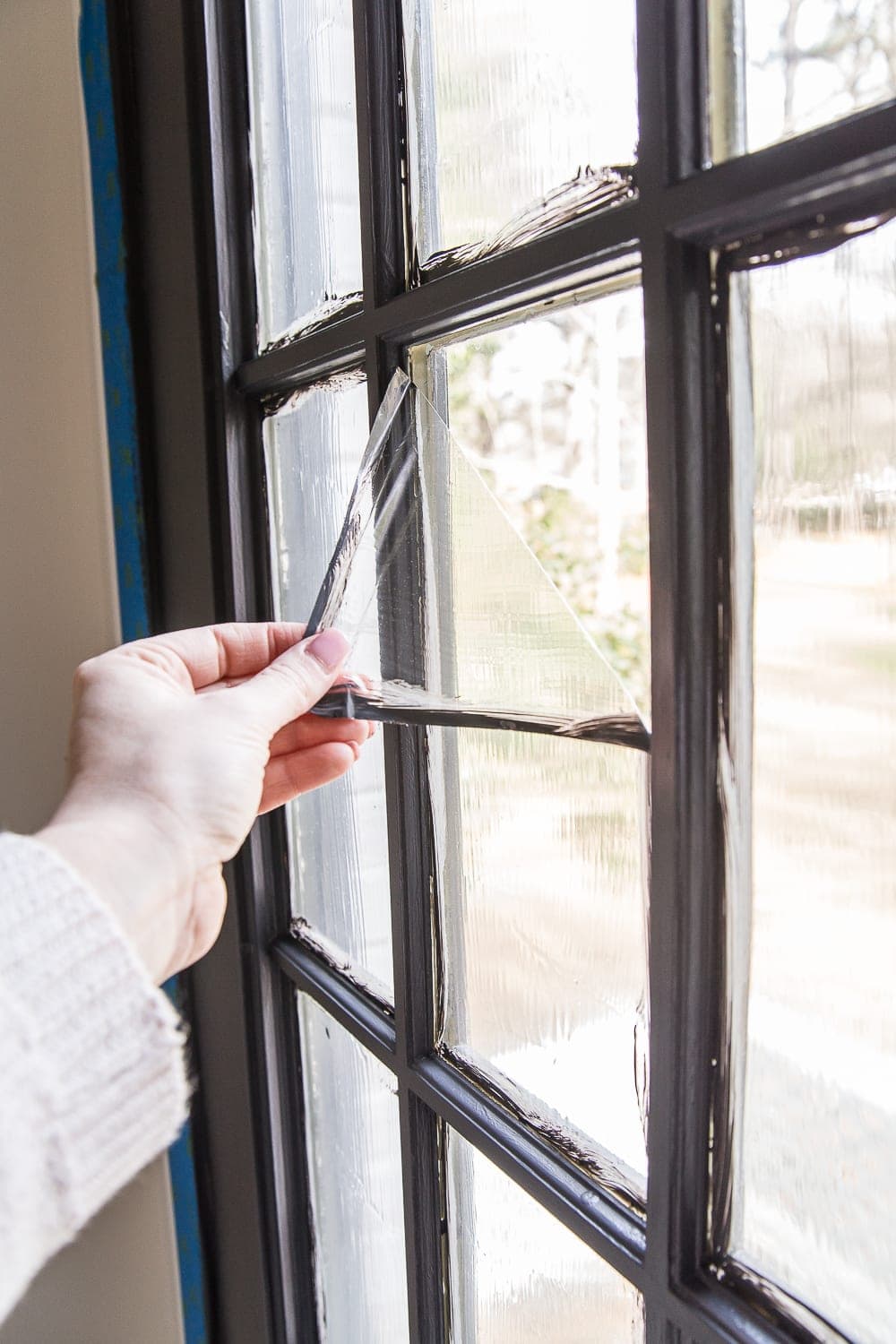
Step 4 – Test Your Paint
Before you do ANYTHING, test your existing paint on your door to see if it is oil or latex based. Put some rubbing alcohol on a cotton ball and swab a small spot on your door. If the paint comes off, it is latex.
If the paint doesn’t come off, you have oil based paint, so you will need to use an oil-based primer for this project.
Be aware, if you live in an older home, it’s a good idea to test your doors for lead. Working with lead paint can be very dangerous and is best to avoid without proper safety measures.
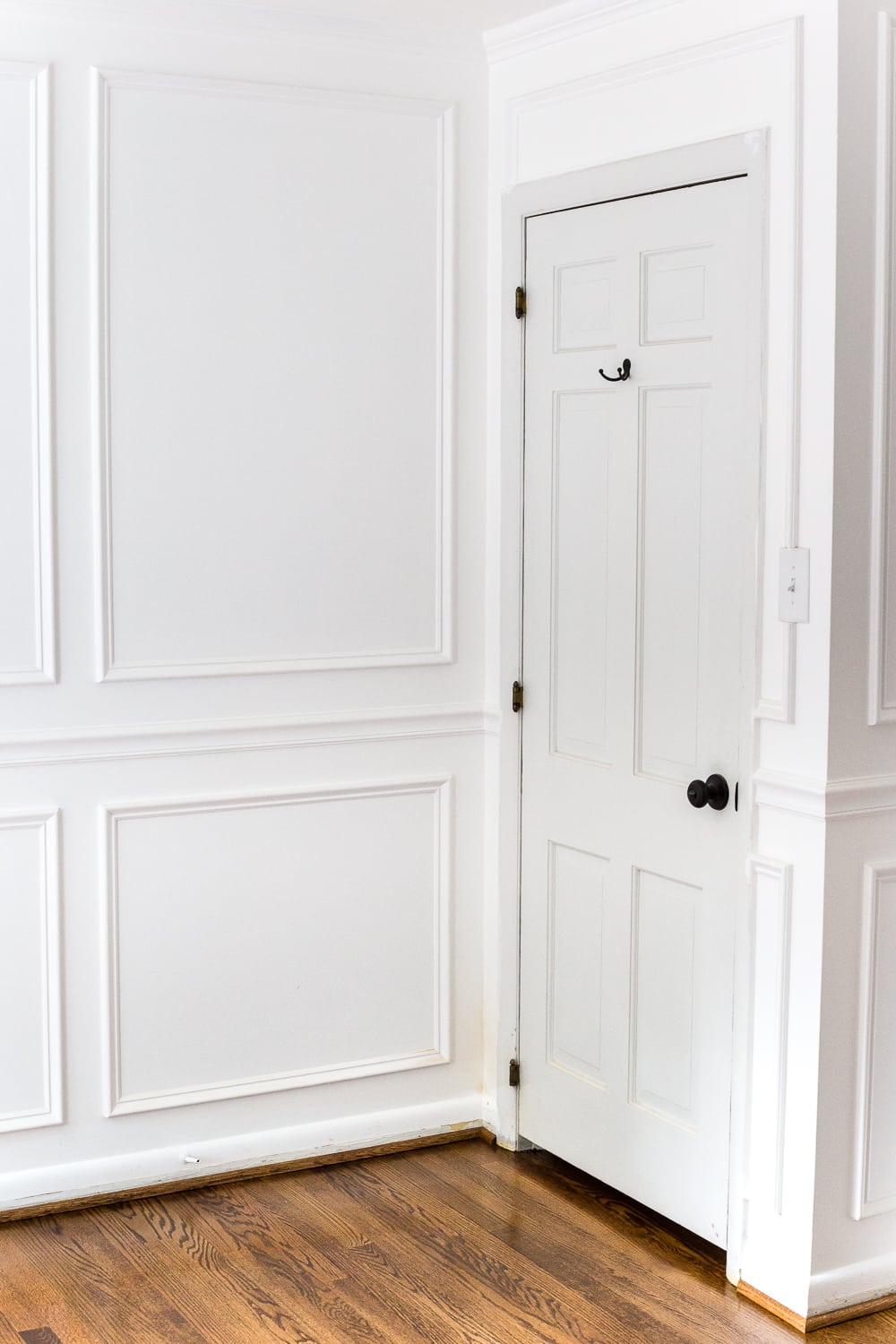
Step 5 – Lightly Sand
Lightly sand your door with 150 grit sandpaper to give it some grip. Remove any sanding dust with a clean, dry rag.

Step 6 – Apply Liquid Sander Deglosser
Wipe down the entire door with liquid deglosser and a rag to remove any existing residue, especially around the door knob where dirt and natural oils from hands can collect.
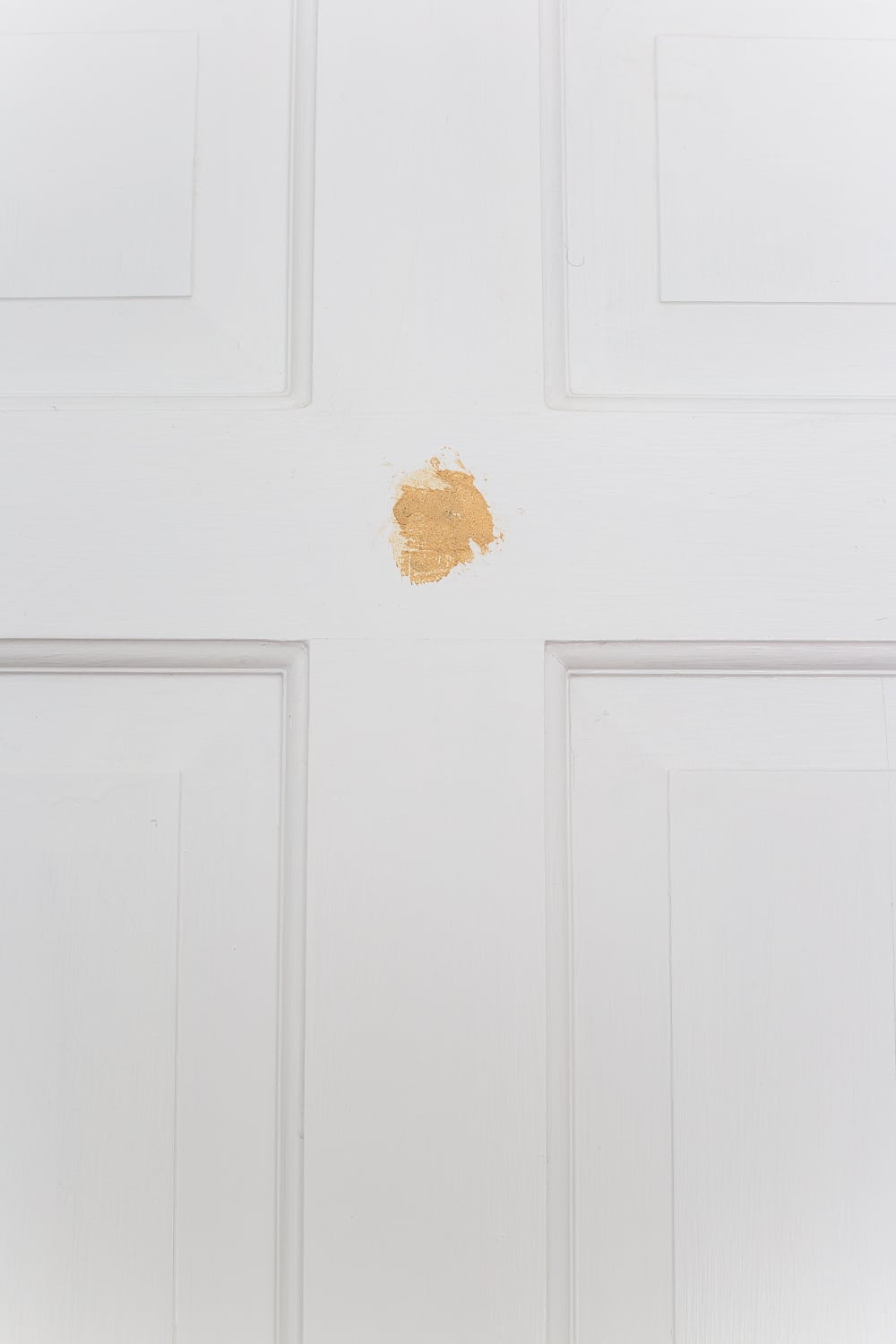
Step 7 – Patch Holes or Dents
Patch any holes or damaged areas with wood filler. Let dry, and sand it smooth. This door had a hook on it that I needed to remove and patch. Do not use caulk or wall spackle to fill holes as it can shrink and crack over time.
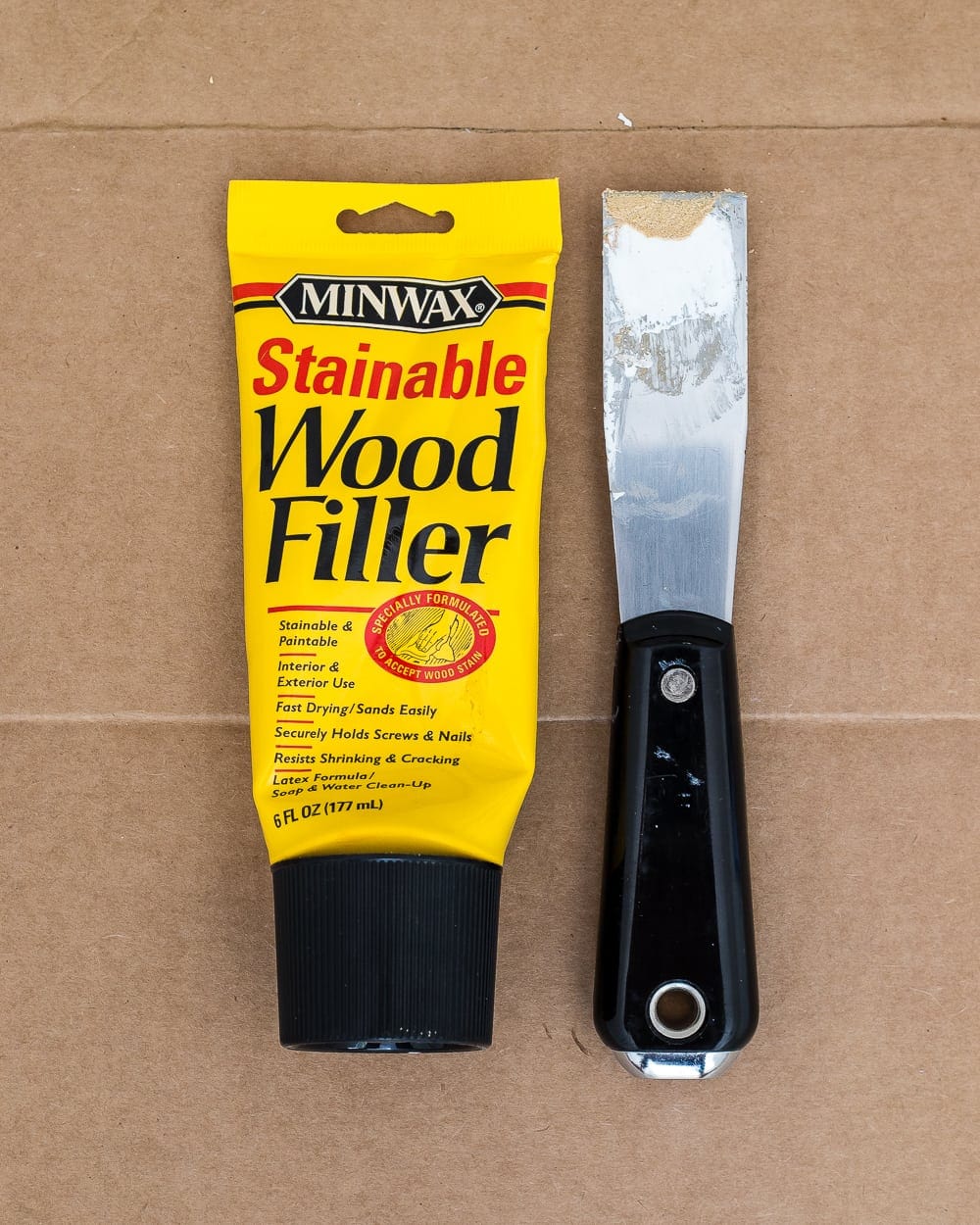
Step 7 – Cover Hinges and Doorknobs with Aluminum Foil
Once the deglosser is dry, you can use aluminum foil and/or painter’s tape to protect your hinges and doorknob from paint (I sometimes just free hand it though).
Aluminum foil is a great choice because you can easily mold it the hardware’s shape.
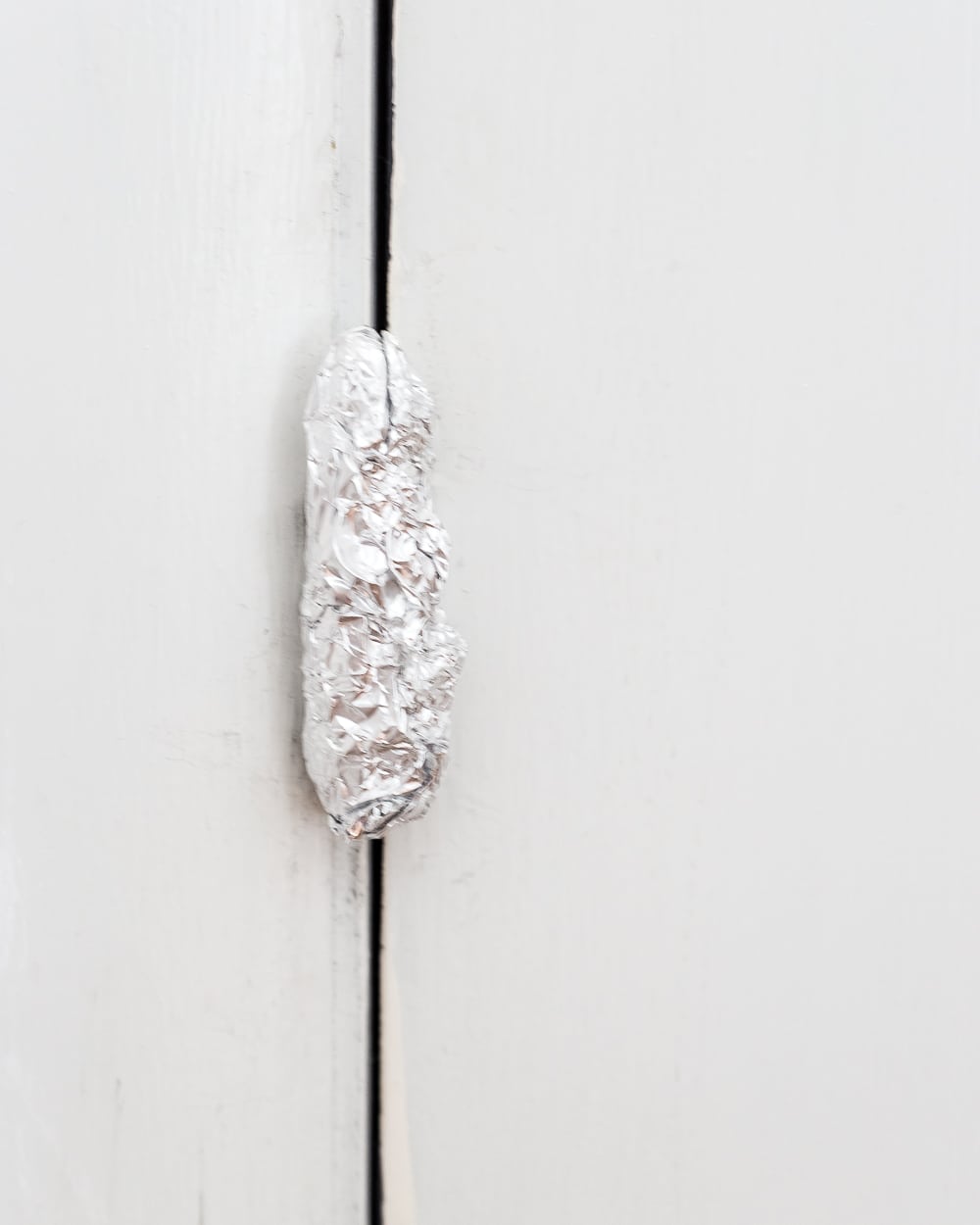
Step 8 – Prime
You can skip this step if your door is new and pre-primed.
Brush on a coat of the primer. I like this triangle detail Zibra brush just because it gives the smoothest finish, from my experience, and the shape makes it easier to paint into edges and corners of routed doors or doors with intricate molding.
I start by priming the edges of the door first since these need the longest time to dry. If you plan to paint just one side of the door, paint the edges that will be visible when you open the door. Leave edges of the door unpainted that will be visible on the unpainted side of the door when it’s open.
Paint the details and grooves next, if you have a paneled door. Then apply it to the flat surfaces after that. Be sure to check for drips as you prime.
DEFINITELY don’t skip the primer step later, if you have oil based paint, or you’ll have quite a paint peeling headache on your hands. Ack!
If you’re painting your doors really dark, use tinted primer to help decrease the number of paint coats you’ll need. (Yay for less work!)

Step 9 – Lightly Sand
Once the primer is fully dry, lightly sand the surface to make it extra smooth and remove any sanding dust with a clean, dry rag.
Here is the order to prime and paint your door in:
Start with painting the edges of the door. Then paint grooves followed by the inside panels, and the rest of the door.
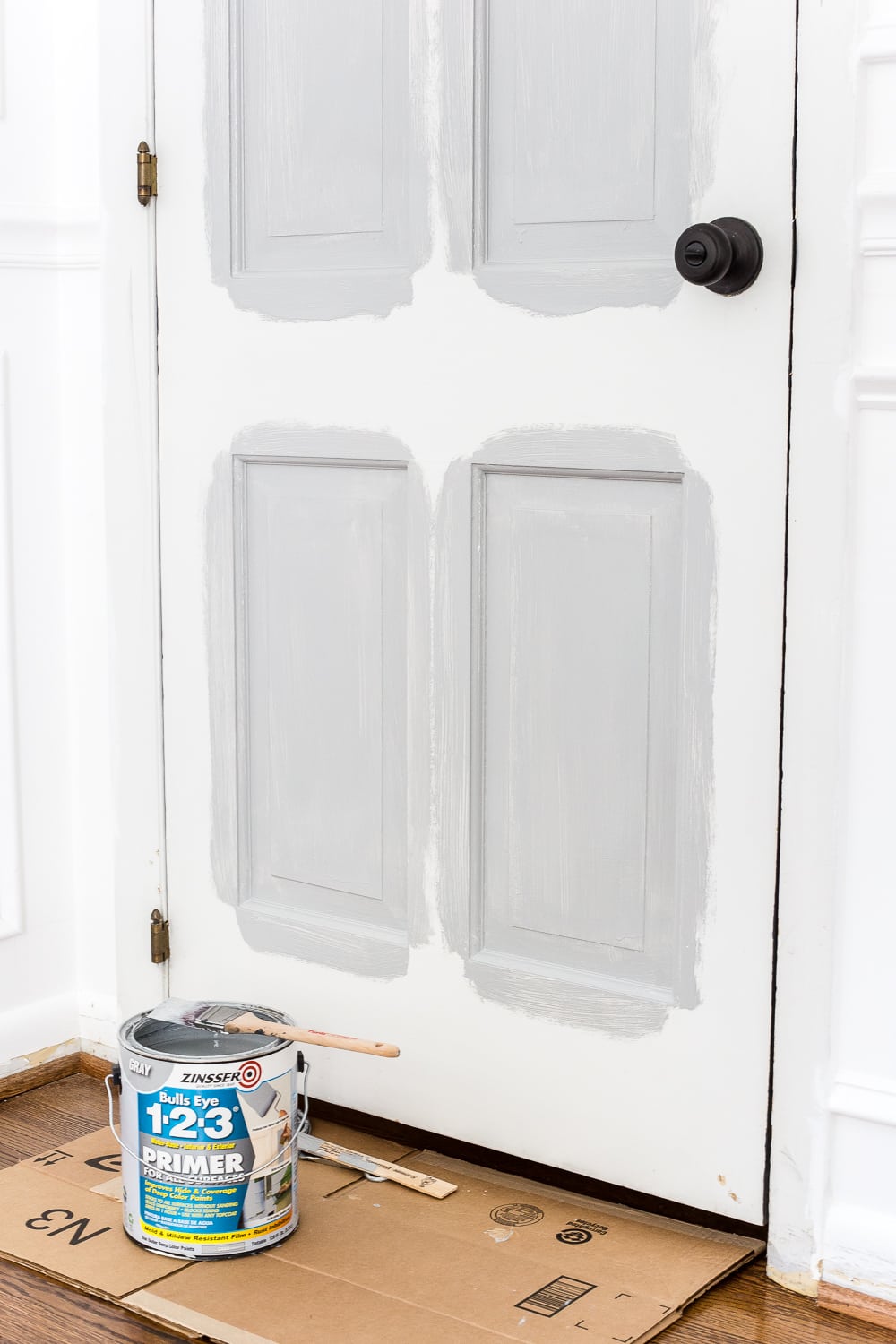
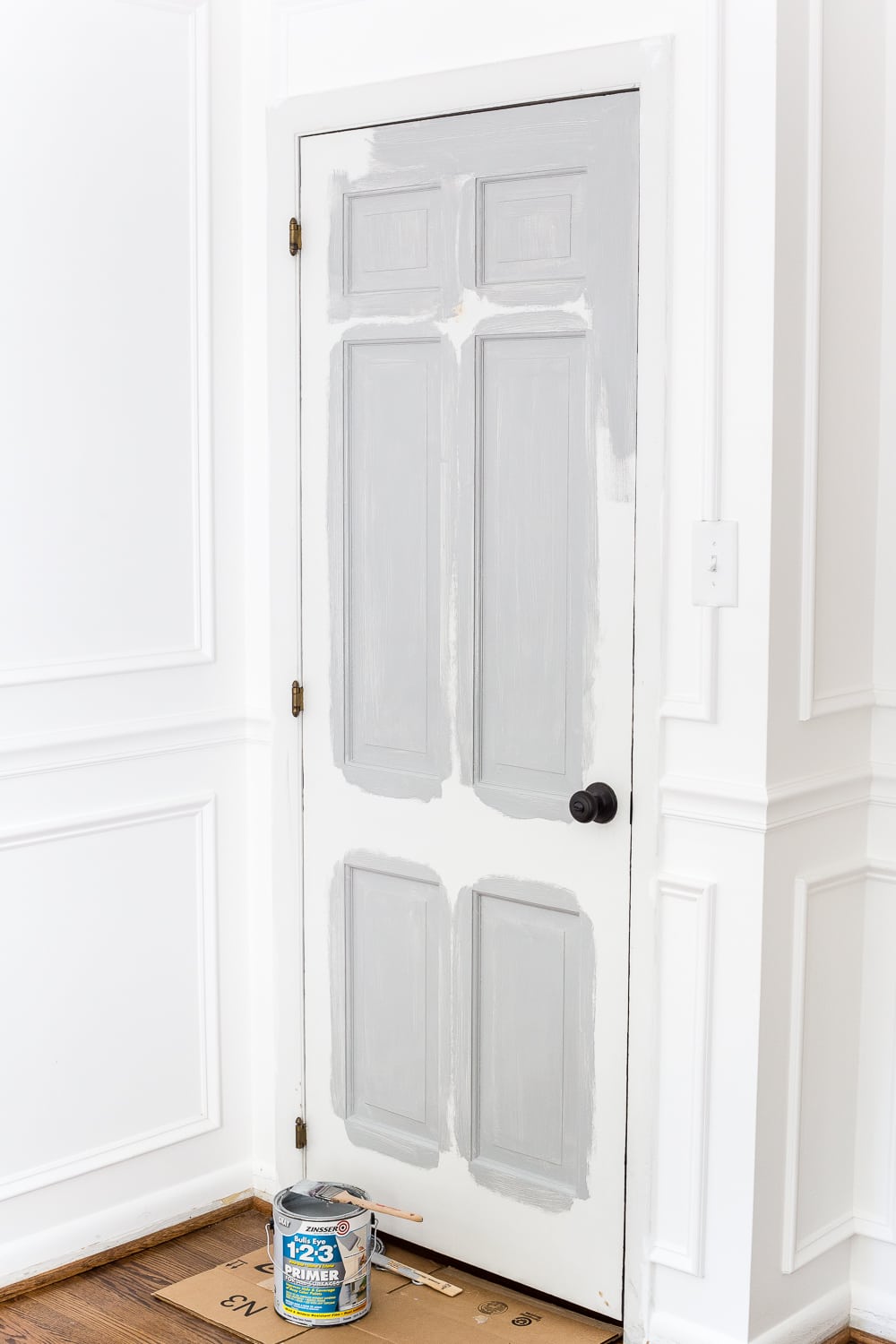
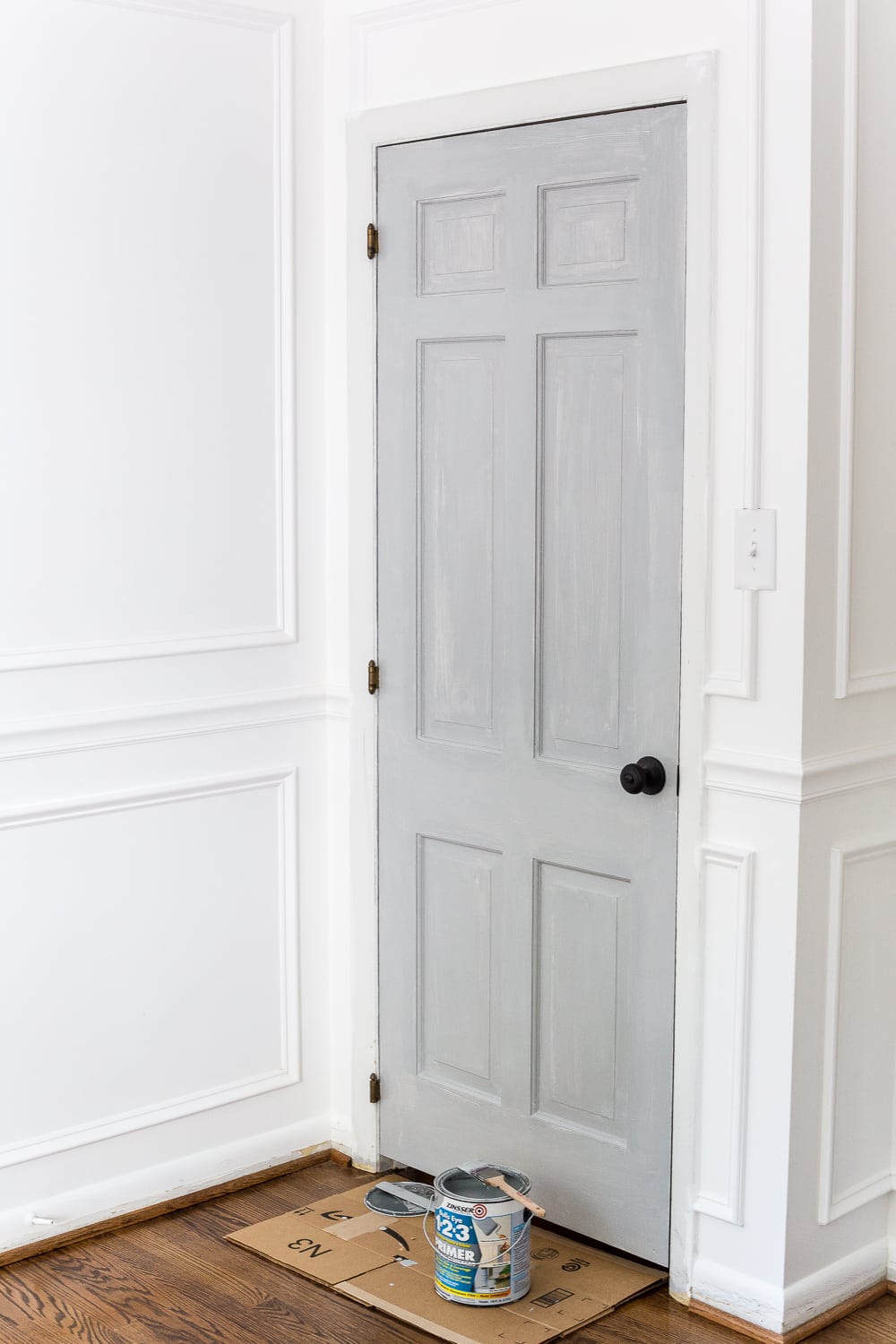
Step 10 – Paint
6. Once the primer is dry, brush on a coat of the Benjamin Moore Advance paint using the triangular brush again. I don’t use a roller because the Advance paint is self-leveling and will help hide brush strokes. And it is a waterborne alkyd paint, so it cures to a more durable, harder finish than latex.
You’ll likely need another coat of paint or two.
Check back for paint drips before the paint dries and smooth out any uneven places with your brush.
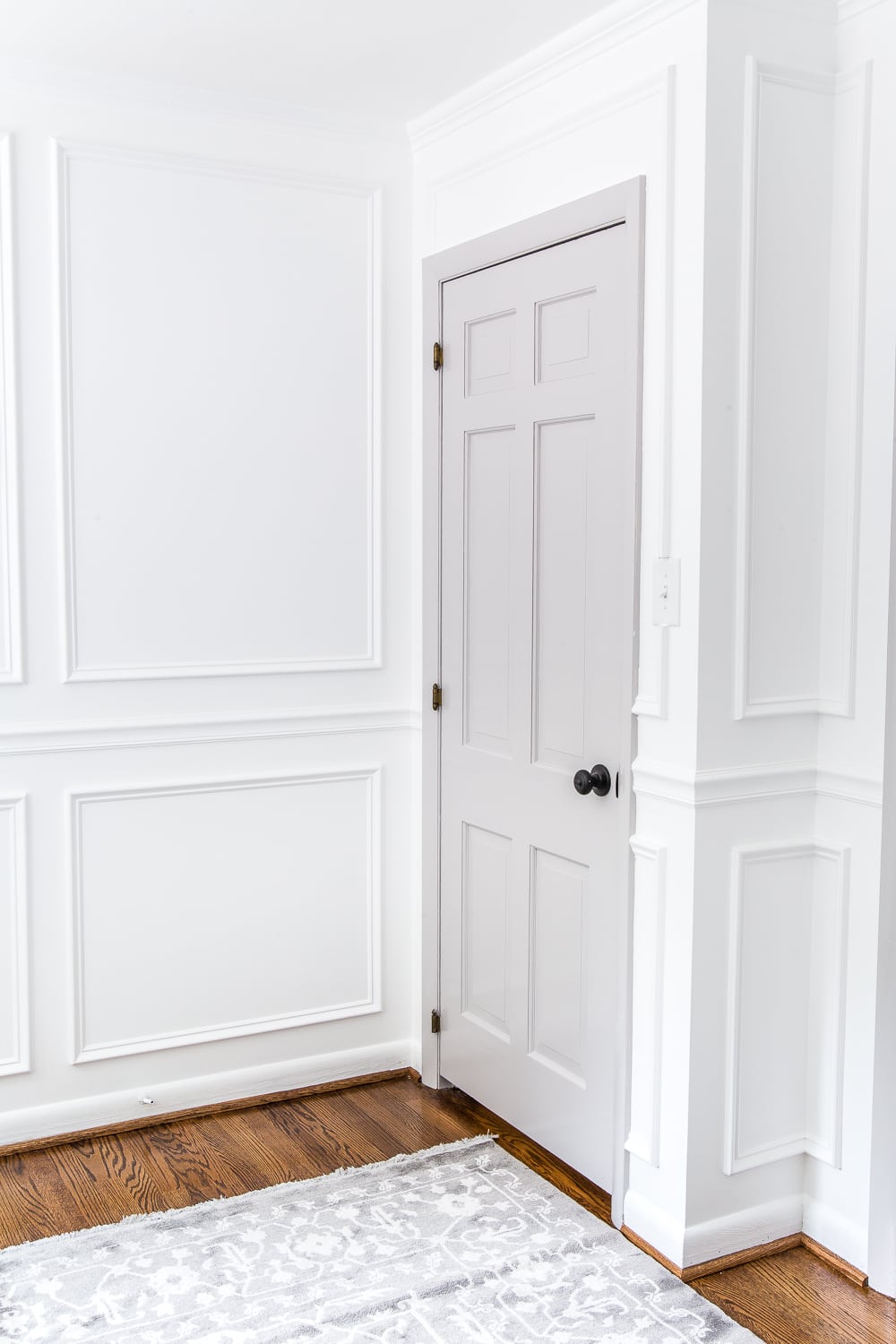
Step 11 – Remove Painter’s Tape While Still Wet
After you’ve painted your final coat, remove your painter’s tape or aluminum foil from the hinges and doorknob while your paint is still wet to prevent peeling or score the tape edge first with a utility knife.
After painting 26 doors in this house now, I think I could do this in my sleep at this point. Ha!
It gets much easier and faster the more you paint.
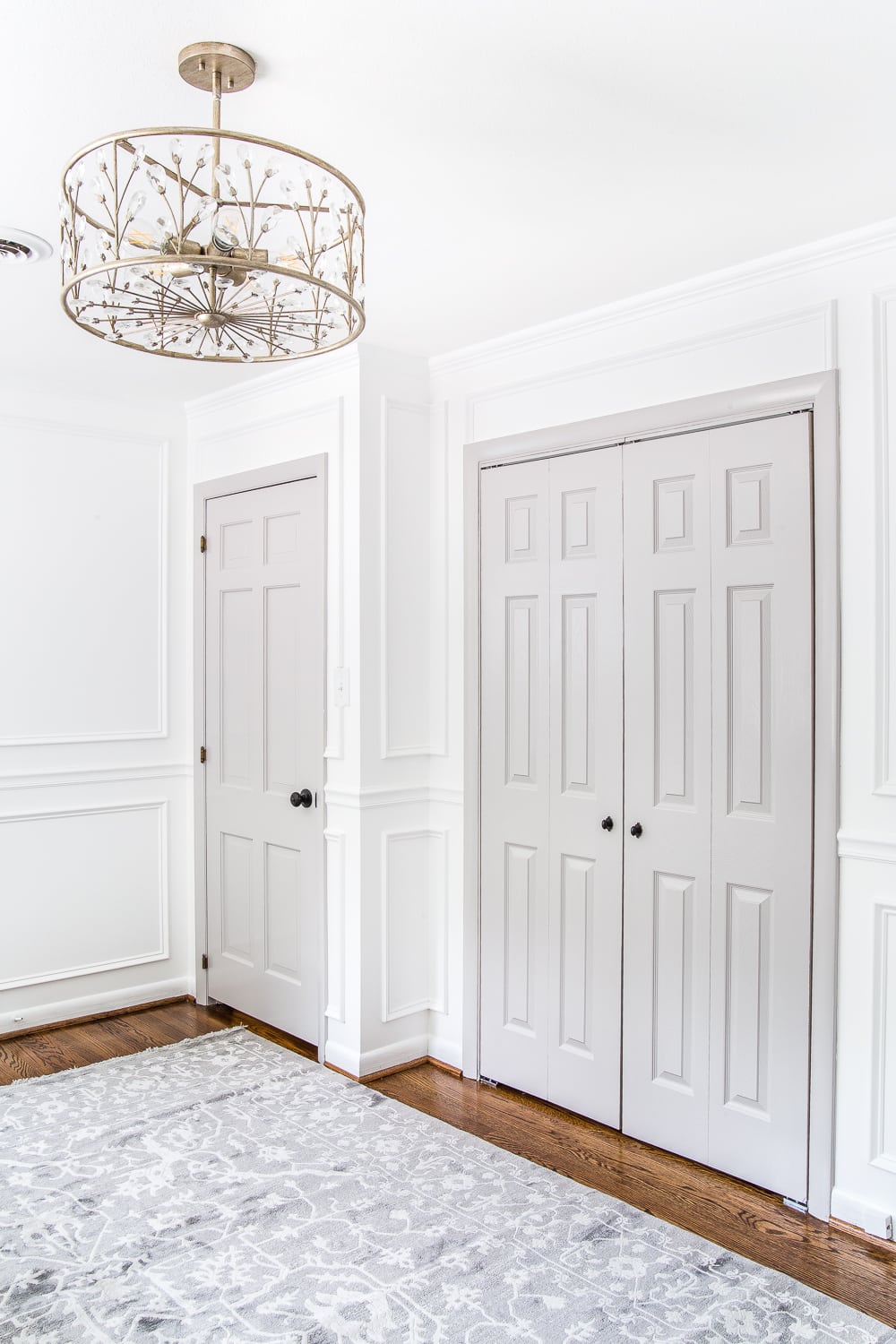
On all of our other doors in our house, we’ve painted with the color Benjamin Moore Wrought Iron, but since I wanted a softer look in Regan’s room against all of the white, I decided to use Benjamin Moore Stonington Gray.
It’s the perfect warm medium gray that isn’t too blue (and would be gorgeous on kitchen cabinets).
Have I convinced you to paint your plain white doors yet? I’m telling ya, it’s a game changer.
More Paint Ideas for Around the House


